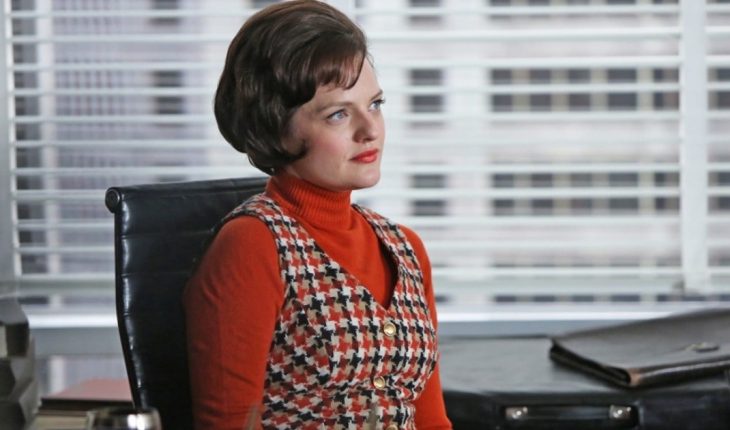You weren’t the only person who gave the show a “play” in quarantine. “My rewatch has begun”, “I just finished it again”, “take advantage to see it”, are some of the comments that are read on social networks. It is that “Mad Men” generates that: the desire to turn the chapters over and over again and always discover new details and ideas. The series, created by Matthew Weiner, It first arrived on the AMC screen that July 19, 2007, where we were traveling to the 1960s to learn about sterling Cooper’s offices and the world of advertising inside, by Don Draper (Jon Hamm), Peggy Olson (Elisabeth Moss), Peter Campbell (Vincent Kartheiser), Betty Draper (January Jones) and Joan Hollow (Christina Heay). With themes such as machismo, adultery, feminism, smoking, alcoholism, identity seeking, it became a portrait of the time in the United States, whether socially, economically and culturally. Although it had very low-key audience numbers, as it was overshadowed by her co-star, “Breaking Bad”, it was approved by critics, five Emmy Awards and a bigotry that grew season after season. Today, the world is in the midst of a pandemic, adapting to the “new normal,” where the series is still booming: as Pointed out by Parrot Analytics – since Netflix does not provide data -, consumption increased by almost 30% in March compared to the previous year and almost 75% in April. So, when it was removed from the platform catalog in early June for contract issues, there was outrage and grievance on social media, as well as a campaign – which didn’t work – to ask for its return. How does the series impact today and in the profession? To answer these questions we spoke with the editor Claire Stokes and the art director Maria Sousa Machado, and also with the Spanish historian Oscar González Camaño, author of the chapter “The Historical Context in Mad Men” of the book “Mad Men or the Fragile Beauty of Dreams on Madison Avenue”. Women in advertising
Claire and Maria Photo: Instagram @claire_stokes19
“Advertising is based on one thing, happiness. And do you know what happiness is? Happiness is the smell of a new car. It’s being free from the bonds of fear. It’s a fence on one side of the road that tells you that what you’re doing is doing well” – Donald Draper.Claire Stokes works as an editor at GS&P, a San Francisco advertising agency, alongside her partner, Maria Sousa Machado, who is art director. Both confess that they watched the series and consider it key to understanding the profession.” I watched the whole show once, but the first season many times. I loved writing, the characters and the art department. It was fascinating to see how far we’ve come in advertising, the similarities that still exist,” Machado confesses, to which Stokes adds: “I saw the early seasons while studying advertising at university. It gave me a great view of the industry and helped me learn about the history of advertising.” They began working together in the profession after graduating from college in 2012. According to the editor, she decided to pursue advertising as she could combine “the three subjects and skills I liked the most in school: English, psychology and art”; Meanwhile, her partner points out that she was attracted to “the way commercials and billboards could pack so much content in such small spaces.” On several occasions, they confess, they heard colleagues refer to “the mad men days” as a past era of publicity, where drugs, alcohol and bad behavior were common. Although they agree that “there are some elements of the lifestyle that sometimes sound attractive,” they claim that the new generation with the current gaze shares “a collective disgust” over the sexist and sexist environment for women at the time.
“There’s still a lot to do when it comes to equality in advertising,” they said.
“After watching the series I was left with the feeling that at no time did the characters offer the same respect to women as men,” Maria says. In any case, it highlights the struggle of the protagonists for their jobs and for their rights; so, she says That Peggy is her favorite character: “Even though I sometimes felt sorry for her or even didn’t like her, she had the right to succeed if she worked hard, so she did.”What is the situation of women today of publicity in that country? As the “3% Movement” said in 2017, which works to defend creative talent and leadershipwomen’s go, women are still underrepresented in executive positions across the board, although they are gradually conquering spaces: there are 29% of creative directors, 39% of executive roles are performed by women in agencies of all sizes, and a third of agencies have LGBTQ+ networks.
“As a female creative team, we are incredibly aware that we are ever being hired in stereotypically feminine brands or products. Because of this, we felt that we had to overcompensate by working harder to work on stereotypically male projects. In the past, we had to show that we could do humor, do sports or sell to teenagers,” says Claire. In turn, Maria believes: “Advertising is just another corporate industry. And unfortunately, there’s still a lot to do when it comes to equality in advertising.” For them, Matthew Weiner’s series discusses everything from gender roles, power dynamics, to the civil rights movement. “It can be educational in a sense. It is always important to learn from the past; it may be encouraging to think how much progress has been made, but at the same time shocking to see how slow the process of change has been and what is lacking in achieving equality,” they read. In what way? Why can we find parallels with our reality? “Mad men”: from the past to times of pandemic
“Mad Men”
“Nostalgia is a delicate word, but powerful. In Greek, ‘nostalgia’ literally means ‘pain of an old wound’. It’s a twinge in your heart more powerful than memory” – Don Draper.In an interview for AlterNet, the show’s creator stated that the plot “uses the past to portray themes that concern us today, and that we don’t always argue openly.” For the historian González Camaño, it is due to multiple factors.” The racial issue, the role of women in their homes and how to reconcile it with the workplace, militant feminism, the crisis of masculinity, the presidency of John F. Kennedy and its assassination, the Vietnam War and how it influences society, counterculture (from beatniks to hippies), arrival on the Moon, technological advances. All of this, to a large extent, remains hot today,” he says. He explains, the series plays with an idealized image of those years, although it is the look of the generation before Weiner’s, since the director was born in 1965 and has only childhood memories; “Weiner looks in his parents’ mirror and his memories are rather those of his parents,” explains González Camaño, following: “For that generation, the sixties were a decade of change, of liberation and his vision was passed on to his children.” Thus, the historian claims that Weiner and the writers create a decade of constant and generation changes of “myths,” such as Martin Luther King, Marilyn Monroe, Jimi Hendrix and more, in line with the “American dream” that prevailed at the time. “All this permes the vision they have of that ‘prodigious’ decade and that, in turn, is generated in our collective imagination as spectators. We see that decade through film and television, especially in relation to the United States,” he expands.
According to González Camaño, in this way the series builds an idea of “nostalgia” for the time, which the agency converts into advertising products: “Don Draper plays that to sell an image projector, which does not cease to be a trip in time, or with an image of love for, as he says, sell stockings. Everything is likely to be used to sell a product or generate a sensation. We, as viewers, are seduced by those years and at the same time we mitify them, they seem to us (and were) a time of change that we can compare with the social changes of today’s times,” he says.” Nothing will ever be the same again when the series ends for these characters: social and economic changes, political and military avatars, have affected them, have had to get used to it and they will see how that mental universe they took for granted will completely explode over the decade,” the historian explains. Thus, the protagonists adapt to social changes, which defines them and shapes their relationships. In this sense, although in another context, advertisers today share the challenge of understanding these new global paradigms in the face of the health crisis, taking on social, cultural and political changes and putting them into the final product. Claire and Maria do their work in one of the countries most affected by the pandemic, with more than three million confirmed positive cases. From this situation, the publicists tell how several colleagues had to adapt their way of working to the home office, to make productionsmpletas from the armchair of his house.
However, it involves different production challenges: “Everyone has had to learn how to create ads using other techniques, images and footage. There’s a challenge to create something original that doesn’t look like any other ad,” they say.” Perhaps a less obvious challenge has also been to find a way to keep the agency’s culture alive while everyone works from home. It’s amazing how many conversations happen in the hallways of the office. We had to be innovative in the way we connect with each other,” they continue. The creation of content in full confinement, they indicate, is related to the idea of union and connection: “Our founders talk a lot about ‘mass intimacy’ as the secret of our creative thinking. For me, this means finding truths that resonate deeply with many people on a personal level,” Maria assumes, according to them, the ultimate goal of advertising is not only to sell a product but to create something that makes people feel something and at the same time solve a problem; for that, they seek inspiration and define themselves as “sponges” of art. We see this idea in the series, when Don expresses: “You’re a product. You’re feeling something. That’s what he sells.”
“I think in the future brands will have to be more honest. Consumers are more aware than ever of what happens in a company beyond its television commercial, and people are unwilling to support a brand that doesn’t keep their word,” says Claire,” meanwhile, her partner continues: “The pandemic has been a time of receding accounts. It has made all of society’s problems more evident, and it has made people more cynical than ever. Brands will have to be ready to be responsible for their words. I suspect the more honest the brand, the more successful it will see.” Undoubtedly, “Mad Men” is a series that influenced popular culture and the creation of other fictions, which left its mark on viewers and marked a before and after in the history of television. While we feel a bit like Don Draper’s silhouette falling between skyscrapers with RJD2 music in the background. what better than to play it – with a glass of Old Fashioned in hand – while we wait for quarantine to end.
In this note:
Mad Men
Anniversary
Netflix





